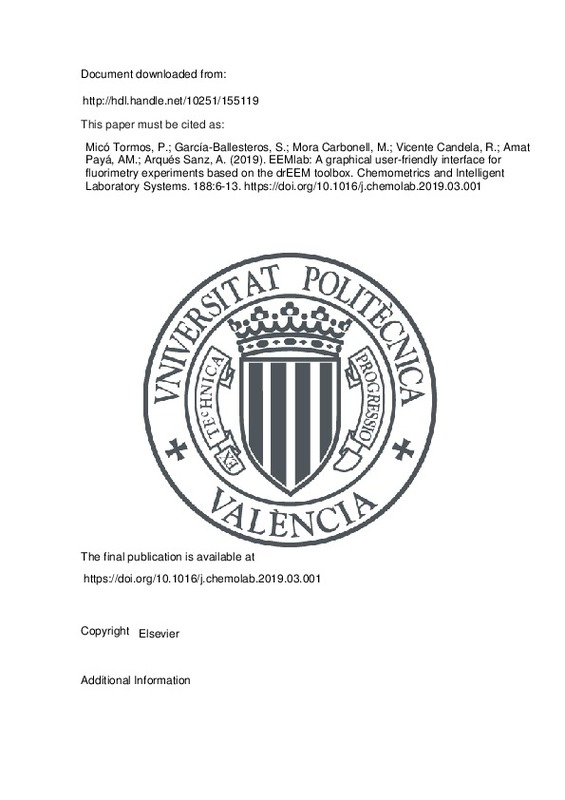JavaScript is disabled for your browser. Some features of this site may not work without it.
Buscar en RiuNet
Listar
Mi cuenta
Estadísticas
Ayuda RiuNet
Admin. UPV
EEMlab: A graphical user-friendly interface for fluorimetry experiments based on the drEEM toolbox
Mostrar el registro completo del ítem
Micó Tormos, P.; García-Ballesteros, S.; Mora Carbonell, M.; Vicente Candela, R.; Amat Payá, AM.; Arqués Sanz, A. (2019). EEMlab: A graphical user-friendly interface for fluorimetry experiments based on the drEEM toolbox. Chemometrics and Intelligent Laboratory Systems. 188:6-13. https://doi.org/10.1016/j.chemolab.2019.03.001
Por favor, use este identificador para citar o enlazar este ítem: http://hdl.handle.net/10251/155119
Ficheros en el ítem
Metadatos del ítem
| Título: | EEMlab: A graphical user-friendly interface for fluorimetry experiments based on the drEEM toolbox | |
| Autor: | ||
| Entidad UPV: |
|
|
| Fecha difusión: |
|
|
| Resumen: |
[EN] Fluorescence has been widely employed for the characterization of organic matter. In particular, excitation emission matrixes (EEM) provide important qualitative information on its composition. However, the application ...[+]
|
|
| Palabras clave: |
|
|
| Derechos de uso: | Reconocimiento - No comercial - Sin obra derivada (by-nc-nd) | |
| Fuente: |
|
|
| DOI: |
|
|
| Editorial: |
|
|
| Versión del editor: | https://doi.org/10.1016/j.chemolab.2019.03.001 | |
| Código del Proyecto: |
|
|
| Agradecimientos: |
The authors want to thank the financial support of the Generalitat Valenciana, Conselleria d'Educacio, Cultura i Esport (Spain) [GV/2015/074].
The authors want to thank the financial support of Ministerio de Educacion y ...[+]
|
|
| Tipo: |
|







![[Cerrado]](/themes/UPV/images/candado.png)


